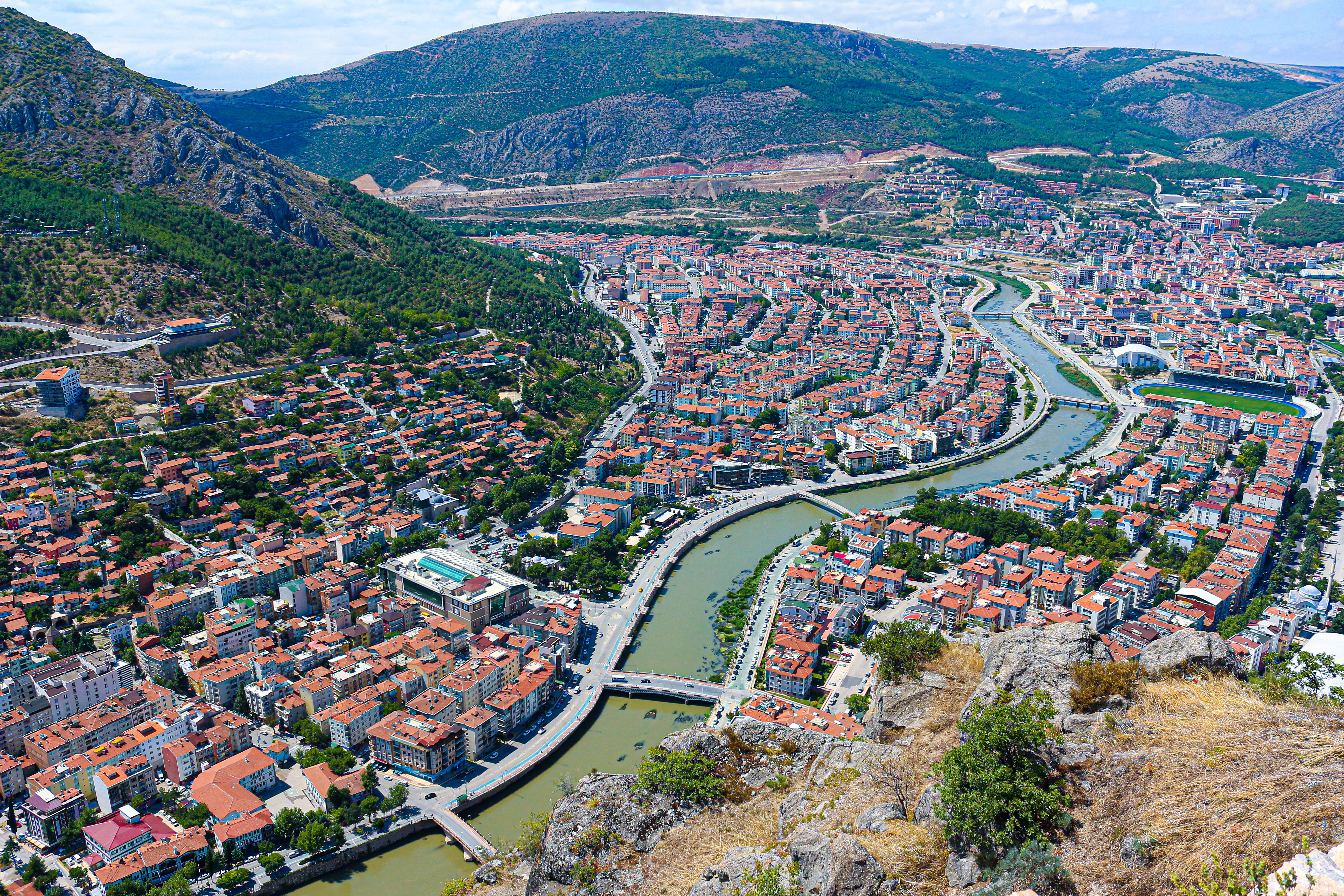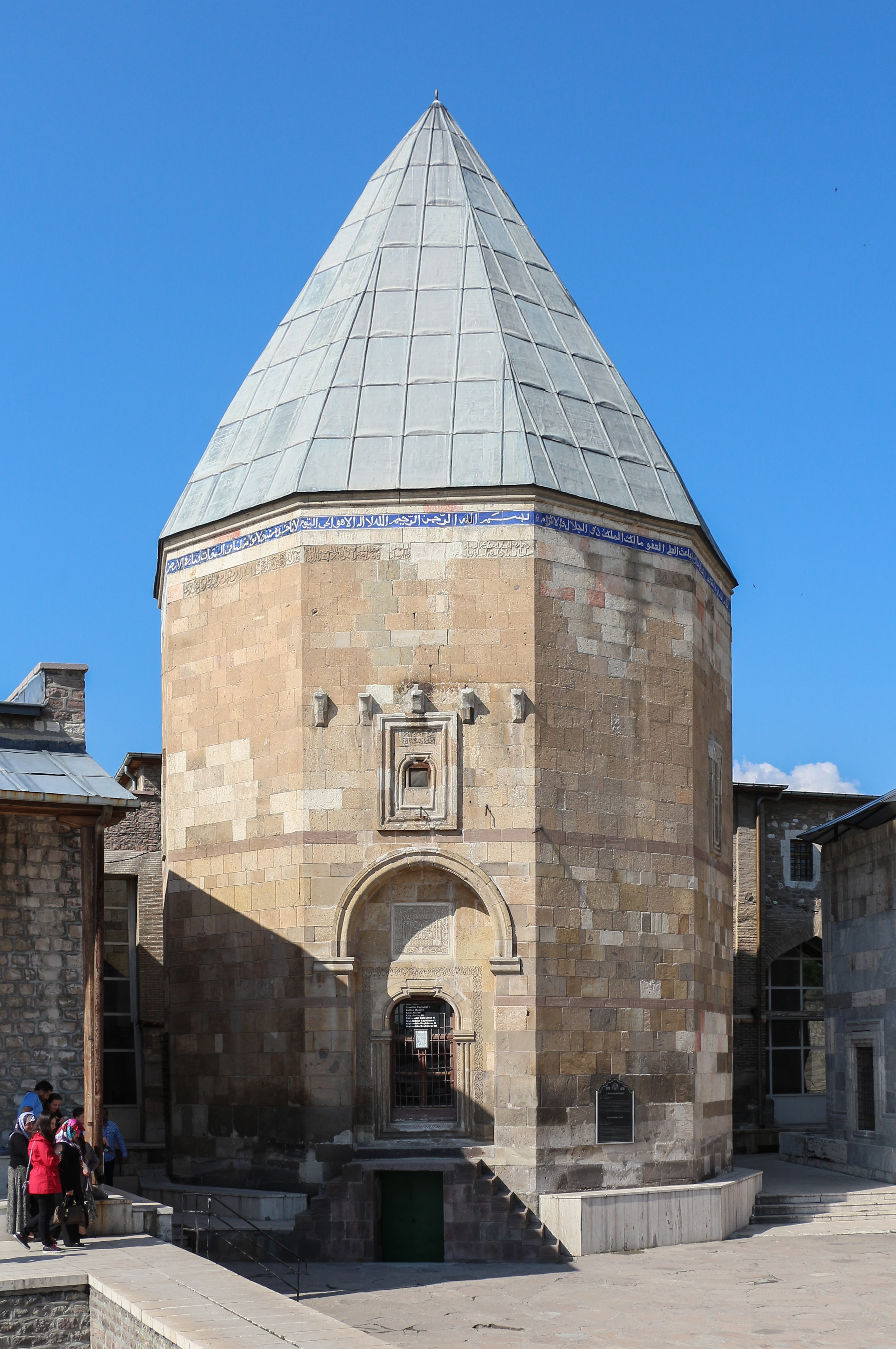|
Taşova
Taşova is a town and a district of Amasya Province of the central Black Sea region of Turkey. It covers an area of 1,041 km², and the population as of 2010 is 33,138, of which 10,759 live in the town of Taşova, the majority spread throughout the surrounding countryside. The altitude of the town is 230 meters. The mayor is Bayram Öztürk ( AKP). Taşova stands on a green and fertile plain, on the banks of the River Yeşilırmak. Climate Taşova has a hot-summer Mediterranean climate (Köppen: ''Csa''). History The first of many cultures and civilisations to settle on the plain were the Hittites who by 1650 BC were spread throughout Anatolia. Then came the Phrygians (1200 - 700 BC), Cimmerians, Medes and Persians. The Ancient Macedonians of Alexander the Great came to Anatolia in 331 BC and upon their dispersal rule of the Amasya region including Taşova passed to the Kings of Pontus (in 291 BC), who remained in control until the arrival of the Romans. The plain was ... [...More Info...] [...Related Items...] OR: [Wikipedia] [Google] [Baidu] |
Alpaslan, Taşova
Alpaslan is a village in the Taşova District, Amasya Province, Turkey Turkey ( tr, Türkiye ), officially the Republic of Türkiye ( tr, Türkiye Cumhuriyeti, links=no ), is a list of transcontinental countries, transcontinental country located mainly on the Anatolia, Anatolian Peninsula in Western Asia, with .... Its population is 1,122 (2021). Before the 2013 reorganisation, it was a town ('' belde''). '' Official Gazette'', 6 December 2012 . References Villages in Taşova District {{Amasya-geo-stub ...[...More Info...] [...Related Items...] OR: [Wikipedia] [Google] [Baidu] |
Amasya Province
Amasya Province ( tr, ) is a province of Turkey, situated on the Yeşil River in the Black Sea Region to the north of the country. The provincial capital is Amasya, the antique ''Amaseia'' mentioned in documents from the era of Alexander the Great and the birthplace of the geographer and historian Strabo. In Ottoman times Amasya was well known for its madrassas, especially as a centre for the Khalwati Sufi order. The district is also home to the Ottoman Turkish leader Kara Mustafa Pasha. Demographics Geography Amasya, between the Black Sea and inner Anatolia, lies at the centre of a region of fertile plains crossed by the Yeşilırmak, Çekerek, and Tersakan rivers. Despite being near the Black Sea, Amasya has hot summers and moderately cold winters. Amasya is an agricultural province known as the best apple growing province in the country, and also producing tobacco, peaches, cherries and okra. Districts Amasya province is divided into 7 districts (capital district in bold ... [...More Info...] [...Related Items...] OR: [Wikipedia] [Google] [Baidu] |
Amasya
Amasya () is a city in northern Turkey and is the capital of Amasya Province, in the Black Sea Region. It was called Amaseia or Amasia in antiquity."Amasya" in ''The New Encyclopædia Britannica''. Chicago: Encyclopædia Britannica Inc., 15th edn., 1992, Vol. 1, p. 313. Amasya stands in the mountains above the Black Sea coast, set apart from the rest of Anatolia in a narrow valley along the banks of the Yeşilırmak River. Although near the Black Sea, this area is high above the coast and has an inland climate, well-suited to growing apples, for which Amasya province, one of the provinces in north-central Anatolia Turkey, is famed. It was the home of the geographer Strabo and the birthplace of the 15th century Armenian scholar and physician Amirdovlat Amasiatsi. Located in a narrow cleft of the Yeşilırmak (Iris) river, it has a history of 7,500 years with many traces still evident today. In antiquity, Amaseia was a fortified city high on the cliffs above the river. It has a l ... [...More Info...] [...Related Items...] OR: [Wikipedia] [Google] [Baidu] |
Provinces Of Turkey
Turkey is divided into 81 provinces ( tr, il). Each province is divided into a number of districts (). Each provincial government is seated in the central district (). For non- metropolitan municipality designated provinces, the central district bears the name of the province (e.g. the city/district of Rize is the central district of Rize Province Rize Province ( tr, Rize ili) is a province of northeast Turkey, on the eastern Black Sea coast between Trabzon and Artvin. The province of Erzurum is to the south. It was formerly known as Lazistan, the designation of the term of Lazistan was o ...). Each province is administered by an appointed governor () from the Ministry of the Interior (Turkey), Ministry of the Interior. List of provinces Below is a list of the 81 provinces of Turkey, sorted according to their license plate codes. Initially, the order of the codes matched the alphabetical order of the province names. After Zonguldak (code 67), the ordering is not alphab ... [...More Info...] [...Related Items...] OR: [Wikipedia] [Google] [Baidu] |
Turkish War Of Independence
The Turkish War of Independence "War of Liberation", also known figuratively as ''İstiklâl Harbi'' "Independence War" or ''Millî Mücadele'' "National Struggle" (19 May 1919 – 24 July 1923) was a series of military campaigns waged by the Turkish National Movement after parts of the Ottoman Empire were occupied and partitioned following its defeat in World War I. These campaigns were directed against Greece in the west, Armenia in the east, France in the south, loyalists and separatists in various cities, and British and Ottoman troops around Constantinople (İstanbul). The ethnic demographics of the modern Turkish Republic were significantly impacted by the earlier Armenian genocide and the deportations of Greek-speaking, Orthodox Christian Rum people. The Turkish nationalist movement carried out massacres and deportations to eliminate native Christian populations—a continuation of the Armenian genocide and other ethnic cleansing operations during World War I. ... [...More Info...] [...Related Items...] OR: [Wikipedia] [Google] [Baidu] |
Ottoman Empire
The Ottoman Empire, * ; is an archaic version. The definite article forms and were synonymous * and el, Оθωμανική Αυτοκρατορία, Othōmanikē Avtokratoria, label=none * info page on book at Martin Luther University) // CITED: p. 36 (PDF p. 38/338) also known as the Turkish Empire, was an empire that controlled much of Southeast Europe, Western Asia, and Northern Africa between the 14th and early 20th centuries. It was founded at the end of the 13th century in northwestern Anatolia in the town of Söğüt (modern-day Bilecik Province) by the Turkoman tribal leader Osman I. After 1354, the Ottomans crossed into Europe and, with the conquest of the Balkans, the Ottoman beylik was transformed into a transcontinental empire. The Ottomans ended the Byzantine Empire with the conquest of Constantinople in 1453 by Mehmed the Conqueror. Under the reign of Suleiman the Magnificent, the Ottoman Empire marked the peak of its power and prosperity, as well a ... [...More Info...] [...Related Items...] OR: [Wikipedia] [Google] [Baidu] |
Kılıçarslan II
Kilij Arslan II ( 1ca, قِلِج اَرسلان دوم) or ʿIzz ad-Dīn Kilij Arslān ibn Masʿūd ( fa, عز الدین قلج ارسلان بن مسعود) ( Modern Turkish ''Kılıç Arslan'', meaning "Sword Lion") was a Seljuk Sultan of Rûm from 1156 until his death in 1192. Reign As Arnold of Lübeck reports in his ''Chronica Slavorum'', he was present at the meeting of Henry the Lion with Kilij-Arslan during the former's pilgrimage to Jerusalem in 1172. When they met near Tarsus, the sultan embraced and kissed the German duke, reminding him that they were blood cousins ('amplexans et deosculans eum, dicens, eum consanguineum suum esse'). When the duke asked for details of this relationship, Kilij Arslan informed him that 'a noble lady from the land of Germans married a king of Russia who had a daughter by her; this daughter's daughter arrived to our land, and I descend from her.' In 1159, Kilij Arslan attacked Byzantine emperor Manuel I Comnenus as he marched past Ico ... [...More Info...] [...Related Items...] OR: [Wikipedia] [Google] [Baidu] |
Danishmend
The Danishmendids or Danishmends ( fa, دودمان دانشمند; tr, Dânişmendliler) was a Turkish beylik that ruled in north-central and eastern Anatolia from 1071/1075 to 1178. The dynasty centered originally around Sivas, Tokat, and Niksar in central-northeastern Anatolia, they extended as far west as Ankara and Kastamonu for a time, and as far south as Malatya, which they captured in 1103. In early 12th century, Danishmends were rivals of the Seljuk Sultanate of Rum, which controlled much of the territory surrounding the Danishmend lands, and they fought extensively against the Crusaders. The dynasty was established by Danishmend Gazi for whom historical information is rather scarce and was generally written long after his death. His title or name, ''Dānishmand'' () means "wise man" or "one who searches for knowledge" in Persian. Origins The Turkoman Danishmendid dynasty was founded by Danishmend Gazi. Sources about Danishmend Gazi's origins however, are steeped ... [...More Info...] [...Related Items...] OR: [Wikipedia] [Google] [Baidu] |
Malazgirt
Malazgirt or Malâzgird ( ku, Melezgir; hy, Մանազկերտ, Manazkert; grc-x-medieval, Ματζιέρτη, Matziértē), historically known as Manzikert ( grc-x-medieval, Μαντζικέρτ, links=no), is a town in Muş Province in eastern Turkey, with a population of 23,697 (year 2000). It is popularly known as the site where the Battle of Manzikert was fought. The current District Governor is Emre Yalçın. History Founding The settlement dates to the Iron Age. According to Tadevos Hakobyan it was established during the reign of the Urartian king Menua (r. 810–785 BC). The Armenian name ''Manazkert'' is supposedly shortened from ''Manavazkert'' ( hy, Մանավազկերտ), Hakobyan, Tadevos Kh. ''«Մանզիկերտ»'' anzikert Armenian Soviet Encyclopedia. Yerevan: Armenian Academy of Sciences, 1981, vol. 7, pp. 210-211. adopted in Greek as . The suffix ''-kert'' is frequently found in Armenian toponymy, meaning "built by". According to Movses Khorenats ... [...More Info...] [...Related Items...] OR: [Wikipedia] [Google] [Baidu] |
Seljuk Turks
The Seljuk dynasty, or Seljukids ( ; fa, سلجوقیان ''Saljuqian'', alternatively spelled as Seljuqs or Saljuqs), also known as Seljuk Turks, Seljuk Turkomans "The defeat in August 1071 of the Byzantine emperor Romanos Diogenes by the Turkomans at the battle of Malazgirt (Manzikert) is taken as a turning point in the history of Anatolia and the Byzantine Empire. or the Saljuqids, was an Oghuz Turkic, Sunni Muslim dynasty that gradually became Persianate and contributed to the Turco-Persian tradition in the medieval Middle East and Central Asia. The Seljuks established the Seljuk Empire (1037-1194), the Sultanate of Kermân (1041-1186) and the Sultanate of Rum (1074-1308), which at their heights stretched from Iran to Anatolia, and were the prime targets of the First Crusade. Early history The Seljuks originated from the Kinik branch of the Oghuz Turks, who in the 8th century lived on the periphery of the Muslim world, north of the Caspian Sea and Aral Sea in their Ogh ... [...More Info...] [...Related Items...] OR: [Wikipedia] [Google] [Baidu] |
Islam
Islam (; ar, ۘالِإسلَام, , ) is an Abrahamic religions, Abrahamic Monotheism#Islam, monotheistic religion centred primarily around the Quran, a religious text considered by Muslims to be the direct word of God in Islam, God (or ''Allah'') as it was revealed to Muhammad, the Muhammad in Islam, main and final Islamic prophet.Peters, F. E. 2009. "Allāh." In , edited by J. L. Esposito. Oxford: Oxford University Press. . (See alsoquick reference) "[T]he Muslims' understanding of Allāh is based...on the Qurʿān's public witness. Allāh is Unique, the Creator, Sovereign, and Judge of mankind. It is Allāh who directs the universe through his direct action on nature and who has guided human history through his prophets, Abraham, with whom he made his covenant, Moses/Moosa, Jesus/Eesa, and Muḥammad, through all of whom he founded his chosen communities, the 'Peoples of the Book.'" It is the Major religious groups, world's second-largest religion behind Christianity, w ... [...More Info...] [...Related Items...] OR: [Wikipedia] [Google] [Baidu] |





.jpg)